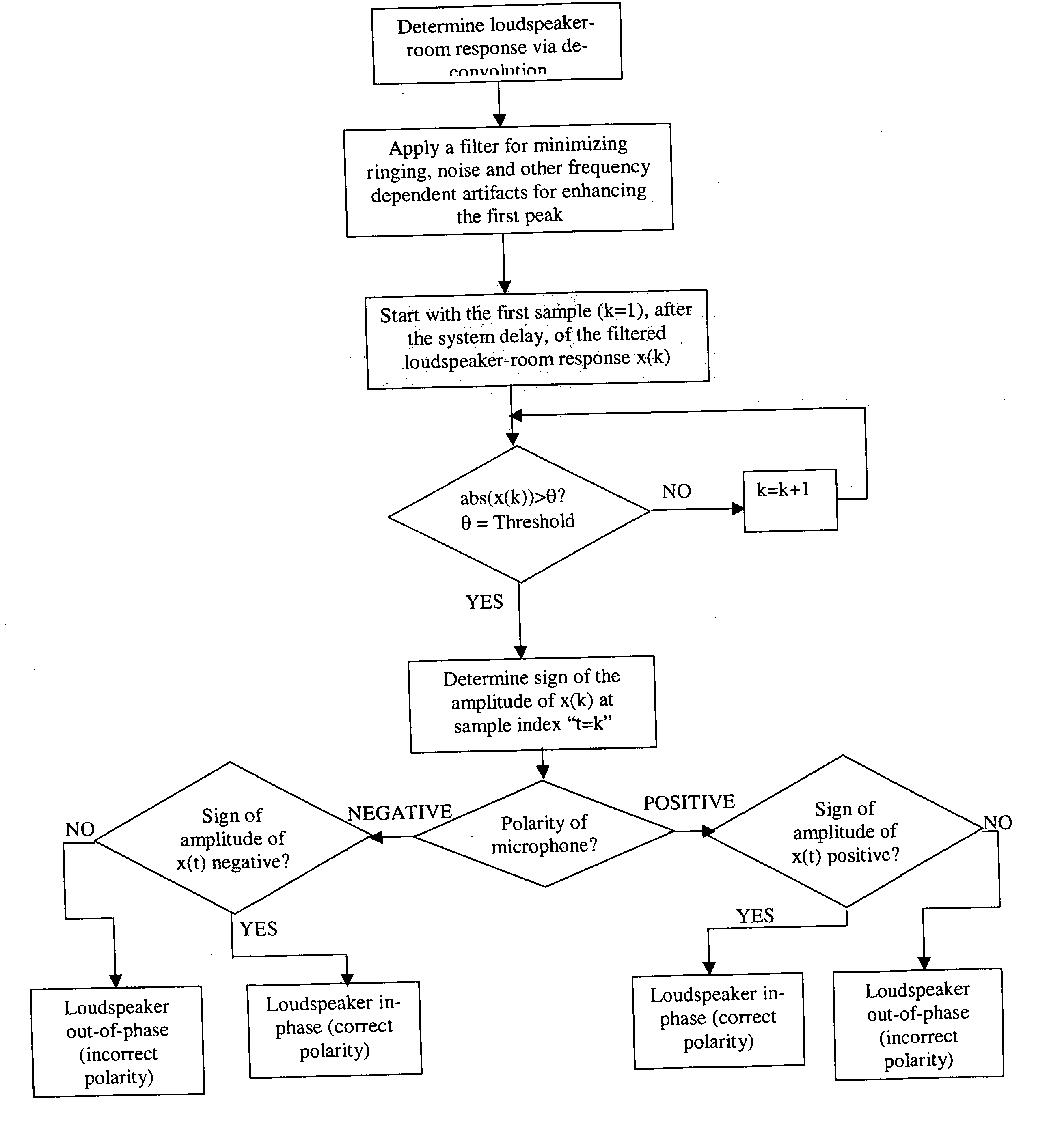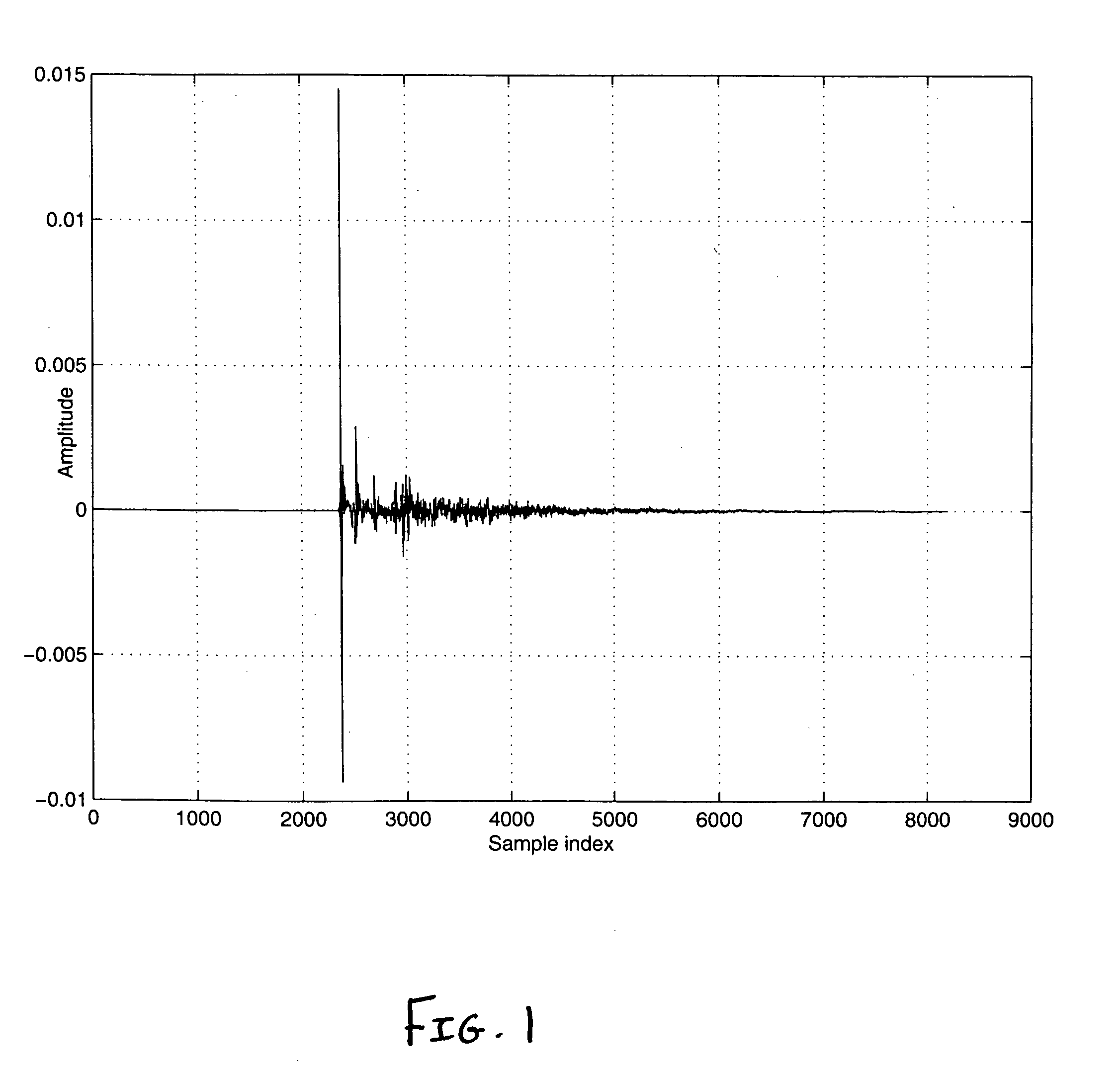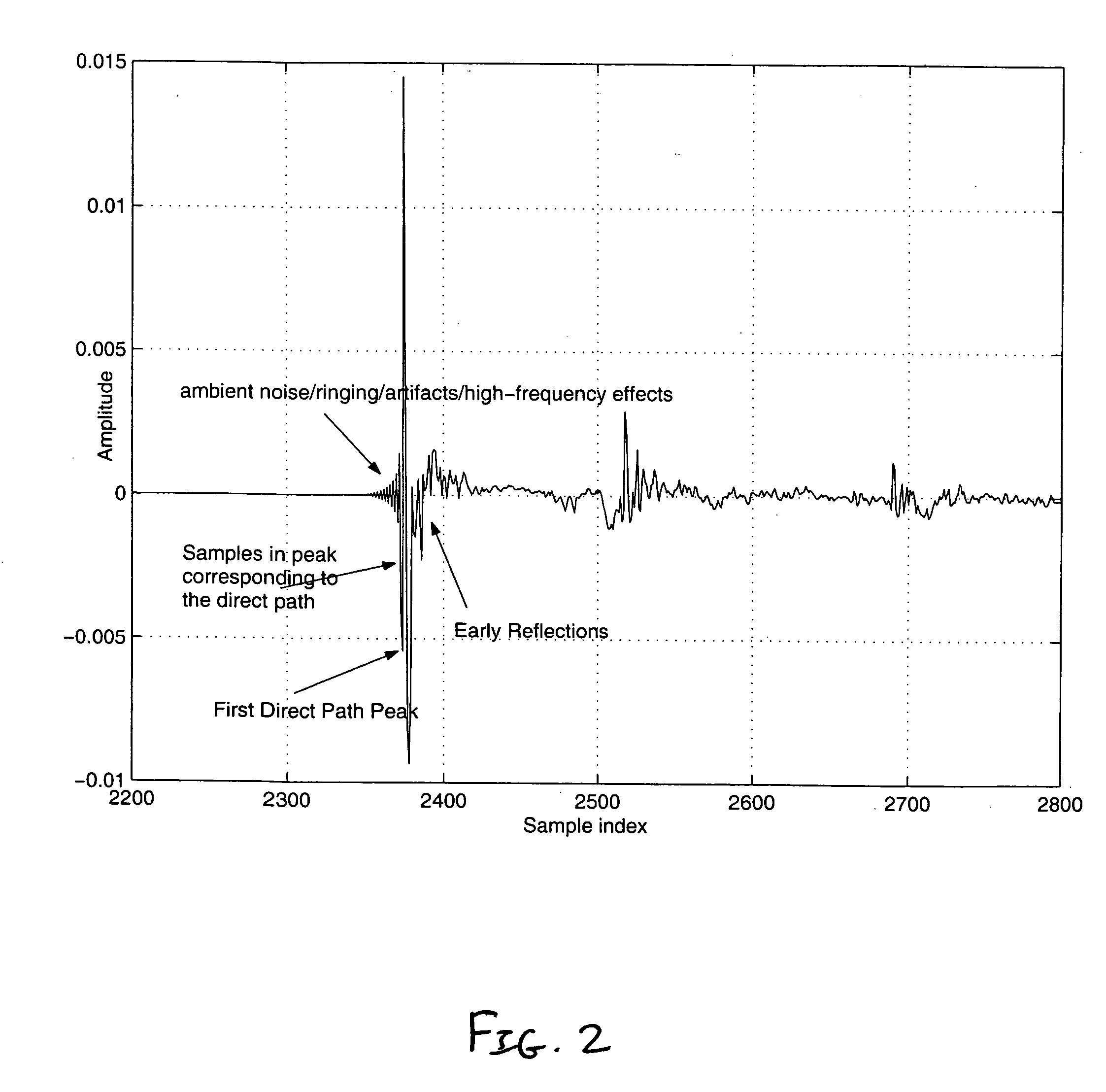Method for automatic loudspeaker polarity determination through loudspeaker-room acoustic responses
a loudspeaker and acoustic response technology, applied in the field of loudspeaker systems, can solve the problems of erroneous polarity determination, difficulty in determining whether or not coincidence of the connection polarities of left and right loudspeakers is achieved, and polarities to be incorrectly determined
- Summary
- Abstract
- Description
- Claims
- Application Information
AI Technical Summary
Benefits of technology
Problems solved by technology
Method used
Image
Examples
Embodiment Construction
[0032] Shown in FIG. 2 is the direct path peak, as depicted by the first negative going peak, measured by a microphone with a negative polarity. Accordingly, any arbitrary signal that is convolved with this loudspeaker-room response will be measured, by the present microphone, with a negative sign of the first peak. Thus, this constitutes that the actual loudspeaker polarity is in phase (i.e., the positive terminal of the receiver / amplifier is connected to the positive terminal of the speaker and the negative terminal from the receiver is connected to the negative terminal of the speaker) since with a positive polarity microphone, the received signal will have a positive going first peak corresponding to the direct path. The polarity can be determined by the sign of this first peak of the direct path or via the sign of the samples in the first peak (also generally shown in FIG. 2). However, accurate determination of the main peak or any sample in the main peak, via automatic methods...
PUM
 Login to View More
Login to View More Abstract
Description
Claims
Application Information
 Login to View More
Login to View More - R&D
- Intellectual Property
- Life Sciences
- Materials
- Tech Scout
- Unparalleled Data Quality
- Higher Quality Content
- 60% Fewer Hallucinations
Browse by: Latest US Patents, China's latest patents, Technical Efficacy Thesaurus, Application Domain, Technology Topic, Popular Technical Reports.
© 2025 PatSnap. All rights reserved.Legal|Privacy policy|Modern Slavery Act Transparency Statement|Sitemap|About US| Contact US: help@patsnap.com



